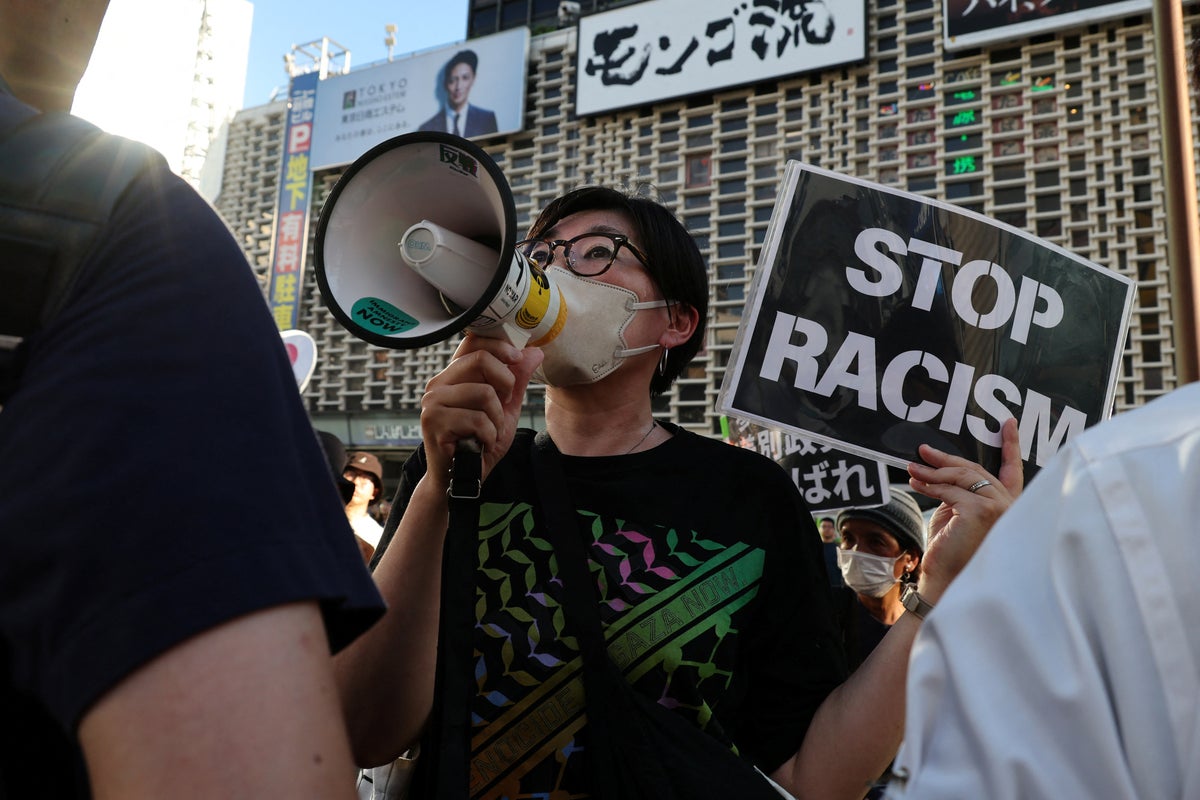Women Are 2x As Likely To Struggle With These Mental Health Concerns
Beyond biological differences, there are societal pressures and gaps in research and treatment that prime women for mood disorders.


Author & Women's Health Researcher
By Phyllis E. Greenberger, MSW
Author & Women's Health Researcher
Phyllis E. Greenberger, MSW, is Senior Vice President of Science & Health Policy for HealthyWomen. She is the former President and CEO of the Society for Women's Health Research (SWHR), a national nonprofit organization widely recognized as the thought leader in women's health research, for 26 years.
Image by Alex Tan / Death to the Stock Photo October 22, 2024 We carefully vet all products and services featured on mindbodygreen using our Our selections are never influenced by the commissions earned from our links. Depression and its cousin anxiety are far more common in women than men. It's estimated that in the United States, women (10.4%) are nearly twice as likely as men (5.5%) to contend with depression in any year, and when it comes to a major depressive episode, women are again far more likely to be afflicted. That's true of anxiety as well: Women may be two to three times more likely to experience generalized anxiety disorder (GAD) and panic disorder than men, they meet lifetime criteria for social anxiety disorder (SAD) more than men, and they have more severe symptoms of all forms of anxiety. Yet we are just beginning to understand the mix of genetics, metabolic systems, the gut biome, inflammation, hormones, and environmental and cultural forces that create sex differences in frequency and manifestation of depression and anxiety. It has taken years to stop attributing women's health issues to hysteria—a hugely misogynistic and misplaced mental health diagnosis—and begin to pay respectful and medically accurate attention to mental health issues such as depression and anxiety. 
Women's unique mental health dynamics
To understand why women are more likely to experience depression than men, a good place to start is the six P's: puberty, premenstrual cycles, pregnancy, postpartum depression, perimenopause, and postmenopause.
Whenever a woman experiences shifts in sex hormones—as happens in puberty, with the monthly menstrual cycle, during pregnancy, during postpartum, and before and after menopause—there are changes in neurotransmitters (which influence mood) and neurosteroids. Neurosteroids affect how neurons fire in the brain, and they're thought to play a role in the development of major depression, post-traumatic stress disorder, premenstrual dysphoric disorder (PMDD), and postpartum depression.
Sex hormones also play a role in anxiety. Changing levels of progesterone and estrogen during the menstrual cycle and over a lifetime can influence the development—and severity—of anxiety disorders.
Pregnancy is associated with an increased risk for GAD, and if a woman had either GAD or SAD before becoming pregnant, she is at an increased risk for postpartum depression and anxiety disorders. It may be that in some women, such shifts in hormone levels—both up and down —are triggered by genetic dysregulation, which increases their susceptibility to depression and anxiety.
A 2017 study by researchers from the National Institute of Mental Health's behavioral endocrinology branch that came out in Molecular Psychiatry found that to be the case. It showed that dysregulation of certain genes was the root cause of PMDD.
"This is a big moment for women's health because it establishes that women with PMDD have an intrinsic difference in their molecular apparatus for response to sex hormones—not just emotional behaviors they should be able to voluntarily control," declared one of the researchers, David Goldman, M.D.
This is joined by a study in the spring of 2023 that revealed genetic differences in men's and women's risk for depression. Researchers from McGill University looked at more than 270,000 people and discovered that while males have one area of DNA linked to depression, females have 11. Furthermore, it turns out that depression has a direct connection to the development of metabolic diseases in women. That insight may lead to new ways of treating women with depression.
Beyond biology
Environmental pressures are also important triggers. In our society, factors that make women more vulnerable to depression and anxiety include body shaming, being the target of violence, childhood sexual abuse, and overall lack of gender equality.
Adding to that, the COVID-19 pandemic and current social upheavals appear to have led to high rates of emotional turmoil. From January 4 to January 16, 2023, around 31% of U.S. women reported symptoms of an anxiety disorder, only 10 points lower than the peak week in October of 2020 when 41.8% said they had such symptoms.
Other factors that influence the development of depression and anxiety involve women's experience and response to the many stressors they face socially and economically. And those factors are compounded when a woman is a member of a marginalized ethnic or racial community.
According to the Department of Health and Human Services' Office on Women's Health, "Women are more likely than men to report symptoms of stress, including headaches and upset stomach. Women are also more likely to have mental health conditions that are made worse by stress, such as depression or anxiety."
MRIs show that women have a stronger stress response in the limbic/striatal regions of the brain, while men have a stronger stress response in their prefrontal cortex. As a result, there are different brain processes going on, and that indicates that different approaches to treatment might be appropriate. Not that anyone knows exactly what those might be.
Gaps in treatments
Lack of knowledge about the underlying causes of depression and anxiety in women is not the only gap in the appropriate diagnosis and treatment of women. There is also an astounding lack of information on appropriate medications and optimal dosages of anti-depression and anti-anxiety medications.
While we know women are more than twice as likely as men to use antidepressants, according to an analysis from the National Center for Health Statistics, there are no antidepressant or anti-anxiety medications made specifically to treat these conditions in women. In addition, there are no dose-for-sex recommendations for available medications, and the only specific risks or needs that are addressed are those relating to warnings about taking some medications during pregnancy or while breastfeeding.
We do know a little bit about the different effects anti-depression medications have on women and men. For example, there are studies that show women respond better to SSRIs such as Zoloft than men do, but men are more responsive to tricyclics like Elavil.
Furthermore, we know that women have less stomach acid than men, so when they take antidepressants, the drug can be more quickly absorbed into their body—increasing the risk for toxicity. The fact that women, in general, carry more body fat may also affect how antidepressants are metabolized—the body fat can hold the medications in the body for a longer period of time. But that's about it.
Clearly, the medical and research communities need to look into the sex-related pharmacology of medications as well as sex and gender differences in vulnerability to depression and anxiety.
Depression's link to heart disease
Depression and anxiety carry an increased risk of cardiovascular disease, and when a woman who is depressed or anxious experiences a cardiac event, the outcome is more adverse for her than for a male counterpart—especially if she is a younger woman. Conversely, after having a heart attack or stroke, more women than men experience depression.
Clearly, mental and physical health are intertwined, and to be able to fully optimize women's well-being, the interplay must be considered in research and clinical treatment.

 Koichiko
Koichiko 



























.jpg)


